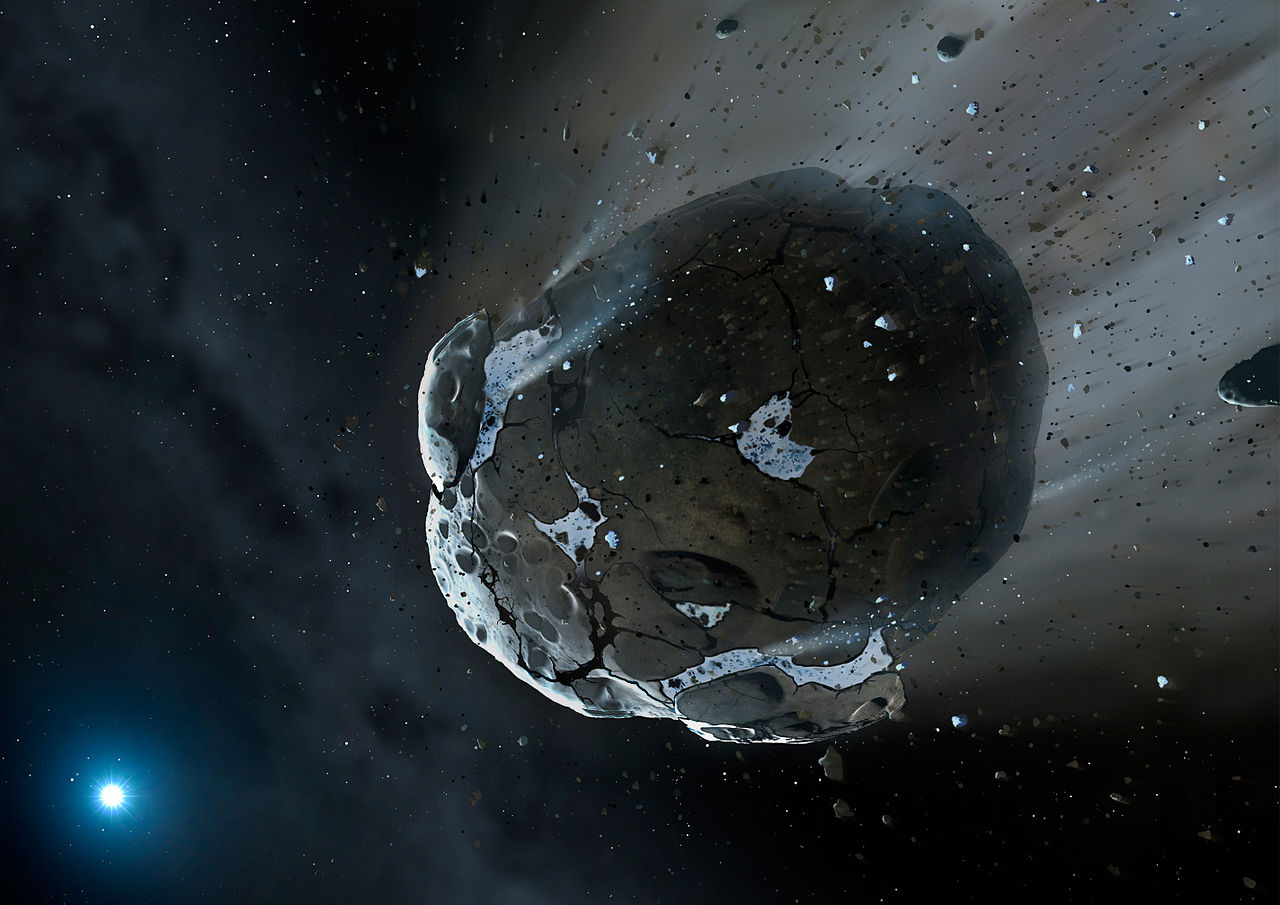
Posted on 12/17/2015 12:46:11 PM PST by Red Badger

Graphic of what a asteroid of this type would look like - Nasa/ESA/M A Garlick/University of Warwick/University of Cambridge
===================================================================================================================
An asteroid will flyby Earth on Christmas Eve and should be visible with a telescope so long as skies are clear. The 2003 SD220 asteroid was discovered in 2003 and its 24 December appearance will be the first of five encounters with our planet over the next 12 years.
Very little is currently known about the asteroid, other than it is travelling at around five miles per second and has an absolute magnitude of around 16.9. Initially scientists had thought it measured around 1.3km in diameter, but now Nasa has said it is more likely to be 0.7km.
This suggests it measures around 1.3km in diameter. The Christmas Eve flyby is nothing to be concerned about – it will pass Earth at a distance of around 0.073 au (6.7 million miles) – in comparison the moon sits 238,900 miles from the planet.
Nevertheless, it is on Nasa's list of Near-Earth Object Human Space Flight Accessible (NHATS) Targets programme, meaning observations of it are important. "The 2015 apparition is the first of five encounters by this object in the next 12 years when it will be close enough for a radar detection.
"By obtaining radar ranging measurements at each observing opportunity, it may be possible to detect non-gravitational perturbations due to the Yarkovsky effect. If so, then we can obtain an estimate of the object's mass, information that is invaluable for understanding the object's bulk density and internal structure."
The December encounter will be close enough for ranging and some imaging but also serves as an "important preview" for the 2018 flyby, which will be much closer. At this time, the asteroid will come within 0.019 au (1.7 million miles) from Earth – so still not close enough to pose a threat but far nearer than most asteroids. It will then visit again three years later in 2021.
PinG!..........................
Initially scientists had thought it measured around 1.3km in diameter, but now Nasa has said it is more likely to be 0.7km.
This suggests it measures around 1.3km in diameter.
Um, now I AM confused.
How close will it be in 2021?
Or is that asking “the wrong question”? (Cue spooky music...)
Yeah I saw that. Apparently they don’t trust NASA figures in the UK............I don’t blame them...................
You might not wanna know......................
I’m preparing my underground bunker at this very moment.
I saw that too. I guess it means that the writer believes the scientists and not NASA!
Read Robert Heinlein’s “Farnham’s Freehold”. It has everything you need to know...........................
This suggests it measures around 1.3km in diameter.
Um, now I AM confused.
Wouldn't be the first time NASA got confused when translating back and forth between metric and English units.
They cannot really project its orbit that far in advance due to the Yarkovsky effect..........................
The Yarkovsky effect is a force acting on a rotating body in space caused by the anisotropic emission of thermal photons, which carry momentum. It is usually considered in relation to meteoroids or small asteroids (about 10 cm to 10 km in diameter), as its influence is most significant for these bodies.
Initially scientists had thought the earth was cooling, but now Nasa has said it is more likely to be warming. This suggests it is in fact cooling.
Should the second ‘diameter’ be ‘circumference’?
“Initially scientists had thought it measured around 1.3km in diameter, but now Nasa has said it is more likely to be 0.7km.
This suggests it measures around 1.3km in diameter.”
The juxtaposition of these two statements makes it seem like, whatever NASA says, the opposite is probably true.
Will it get close enough that I won’t need to bother with a haircut?
1.36 AU, or 1.36 x 92.5 million miles = 125 million miles
http://mel.ess.ucla.edu/radarwiki/index.php/FutureTargetsJDG20100601
Gives a whole new meaning of getting nothing but rocks in the Christmas stocking.
Hold on. I’m not sure if that 125 million miles in 2021 is correct. According to that chart I linked to, it’s at that same exact distance every time it makes a “close approach”, including this recent one (Dec 2015) where the posted article says it’ll come to within 6.7 million miles. So that number I provided obviously can’t be correct.
I’m working on my backyard Drone Blind.
The Yarkovsky effect is a force acting on a rotating body in space caused by the anisotropic emission of thermal photons, which carry momentum. It is usually considered in relation to meteoroids or small asteroids (about 10 cm to 10 km in diameter), as its influence is most significant for these bodies.
IOW, they don't have a f'ing clue. :>)
Disclaimer: Opinions posted on Free Republic are those of the individual posters and do not necessarily represent the opinion of Free Republic or its management. All materials posted herein are protected by copyright law and the exemption for fair use of copyrighted works.